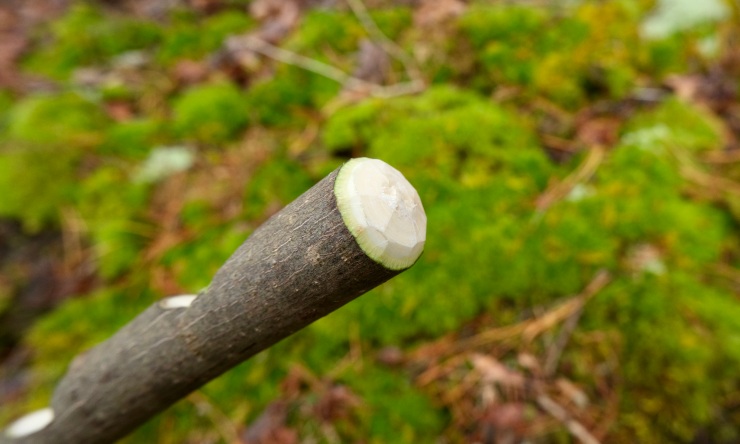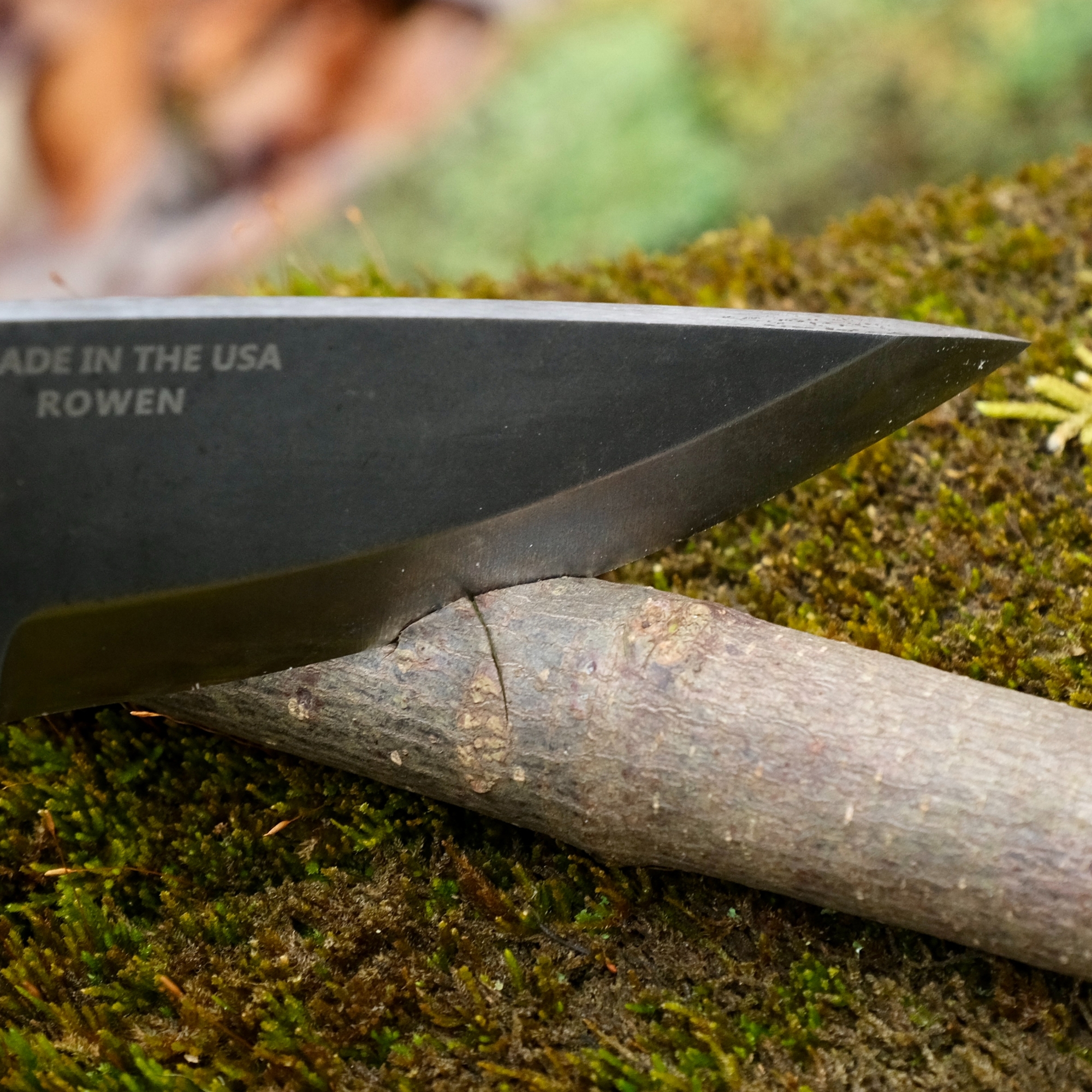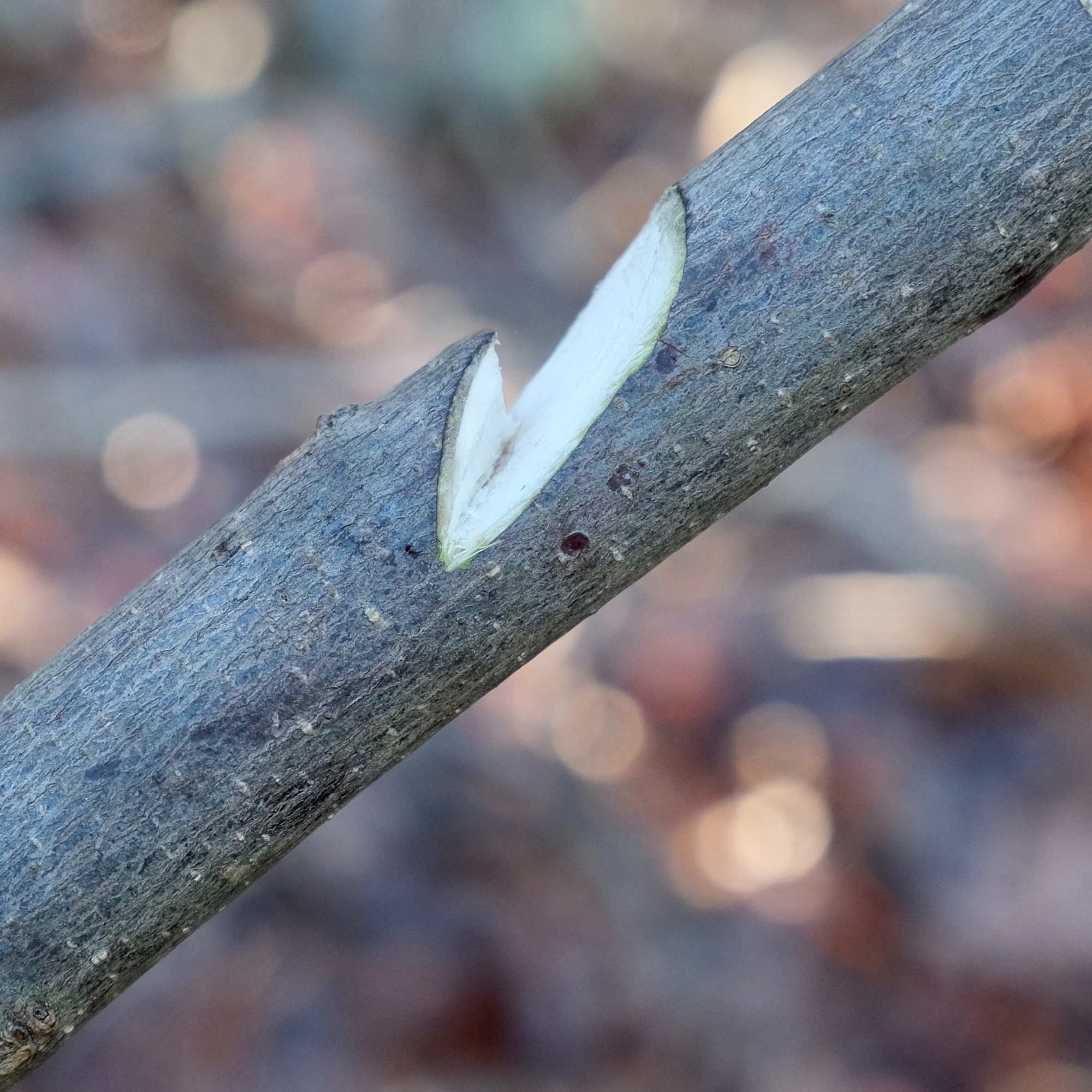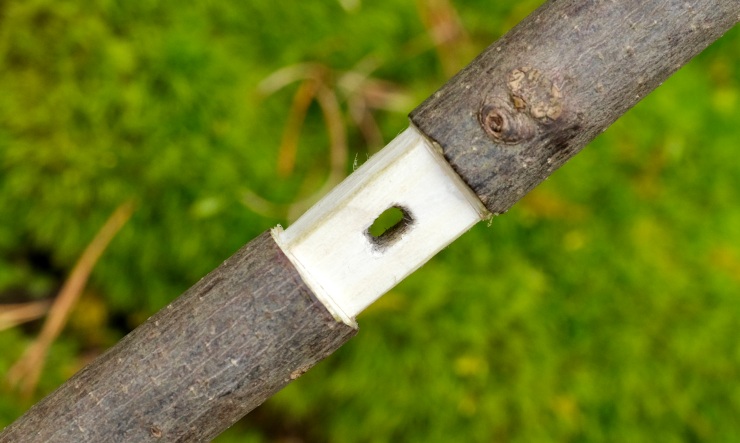
How to Carve a Try Stick
Nearly every model of knife has different blade shapes, ergonomics, and grind geometry. So, just like breaking in a new pair of boots, when you get a new knife, you should take some time to learn how it performs and, more importantly, how you'll have to modify your technique to perform cutting tasks.
Mors Kochanski discusses the concept of the Try Stick in his book Bushcraft and suggests it's an excellent way to practice your knife skills as you carve a variety of useful notches and shapes.

Not one to waste an opportunity, I used my recently acquired ESEE Pinhotti Friction Folder to carve this try stick. It's my first friction folder, but so far, so good. The tang ensures it stays closed while in most grips and cuts, and it's proven to be a very capable and handy knife.
In this article, we'll explore the various notches and cuts on the Try Stick.
Half Sphere

If you've ever tried to drive a wooden stake into the ground that lacked chamfered edges, then you most likely know why this cut is important to bushcrafters. The half-domed shape keeps wooden stakes from splintering and splitting when they're hammered in.
Saddle Notch


The saddle notch is a simple half-circle cut perpendicularly into the stick. This type of notch is useful for building shelter frames, log benches, and more. Focus on keeping the two halves of the notch symmetrical, and also be aware that the stick or log you plan to place into the notch may not be perfectly round, so adjustments are sometimes necessary.
Latch Notch

This notch is extremely useful for a variety of projects. It can serve as a guyline catch on tent stakes, and it's used in Figure 4 and L7 traps. Pay attention to the angle of the cut that's perpendicular to the grain of the wood. Depending on your project, you might want it to be slightly more acute than 90 degrees. Remember, it's always easy to cut more wood out of the notch, but it's impossible to add it back.
Cylinder Notch

This notch is also known as a round reduction. It's infinitely useful anytime you need a smaller-diameter piece of wood. It's great for rounding a shelter pole, making a secure slot for lashing, and the reel portion of a handline.
Beam Cut

The beam cut is very similar to the round reduction but square. We advise you to go slow and remove small amounts of wood until you can ensure the surfaces are, in fact, square. On a larger scale, this cut is useful for cabin construction, but it's also used to make the surfaces of a hearth board flat.
V Notch

This simple V Notch is useful for the notch in a bow drill hearth board. It's also great to use in conjunction with the beam cut. It also shares the same difficulties as that notch, so if you need a true 90-degree notch, start shallow and carefully adjust as you go.
Hanger Notch


A pot over an open fire is a great way to boil water or cook dinner, but securing your pot can be a challenge. With the hanger notch, you can easily hang a pot with a bail over a fire. There are multiple ways to attach the other end of the stick to support the hanger, but for now, we'll focus on the notch. The easiest way to carve this notch is to start with an X that's push-cut directly into the wood. Then you can work away the material on one end of the X. For an extra secure fit, focus on undercutting the point that's facing upwards.
Hole

While this might seem like a cut that you're likely to use often, it's worth practicing for constructing frames, pump drills, and other tools. Don't underestimate peg and hole construction and the importance of precise cuts when utilizing it.
Lashing Cross

While the lashing cross isn't included in every version of the Try Stick, we think it's worth including because it's useful and great practice for making precise symmetrical cuts. It's excellent for securing lashings, and it can be adapted to pack frames and other construction projects.
Wedge

The simple wedge is great for securing stakes and for making a digging stick. You can make the angle as acute or obtuse as you need. If you're making stakes or the ever-handy digging stick, pay attention to the type of wood.




